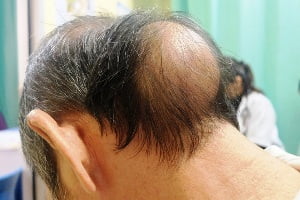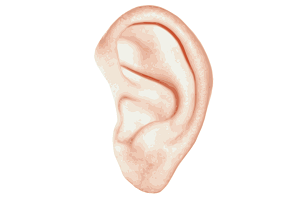A sudden infection in the middle ear, or acute otitis media, is the medical word for the popularly used term “ear infection” (the space behind the eardrum). Although ear infections are one of the most frequent reasons why young children visit doctors, anybody can acquire one, including children and adults.Ear infections frequently go away on their own. Your doctor might suggest a drug to treat your discomfort. Your doctor could recommend an antibiotic if your ear infection has persisted or gotten worse. An antibiotic is typically required for ear infections in children under the age of two.
You should visit your doctor to make sure the ear infection has resolved or if you or your child continue to have pain or discomfort. Frequent ear infections, persistent ear infections, and fluid accumulation behind the eardrum can all have a negative impact on hearing and have other serious consequences.
Causes of Otitis Media
A bacterium or virus in the middle ear causes an ear infection. This infection frequently develops as a result of another sickness, such as a cold, the flu, or an allergy, which enlarges and congests the nasal passages, throat, and eustachian tubes.
Eustachian tubes’ function
The Eustachian tubes are a pair of tiny tubes that originate from each middle ear and end up behind the nasal passages, high in the back of the throat. The tubes’ neck ends open and close to:
- Middle ear air pressure should be controlled.
- Inhale some cool air.
- Drain the middle ear of its regular secretions.
Eustachian tubes that are swollen and then plug themselves might result in fluid accumulation in the middle ear. The symptoms of an ear infection may develop if this fluid is infected.The Eustachian tubes are more horizontal and thinner in youngsters, which makes it harder for them to drain and increases the likelihood that they will become clogged.
Adenoids’ function
Two tiny tissue pads called adenoids are located high on the back of the nose and are thought to influence immune system function.Adenoids are located close to the Eustachian tubes’ opening, so swelling could prevent the tubes from opening. A middle ear infection may result from this. Due to the fact that children’s adenoids are larger than adults’, adenotons swelling and irritation are more likely to contribute to childhood ear infections.
Related circumstances
The following middle ear conditions might cause comparable middle ear issues or be connected to ear infections:
- Otitis media with effusion is defined as middle ear enlargement and fluid accumulation (effusion) without bacterial or viral infection. This could happen when the fluid buildup lasts even after the ear infection has subsided. It might also happen as a result of eustachian tube dysfunction or a non-infectious obstruction.
- When fluid stays in the middle ear and keeps coming back without a bacterial or viral infection, the condition is known as chronic otitis media with effusion. Children become more prone to ear infections and their hearing may suffer as a result.
- An ear infection called chronic suppurative otitis media persists despite standard medical care. This may result in an eardrum hole.
Complications
The majority of ear infections don’t have any long-term consequences. Having recurring ear infections can have major consequences:
Hearing impairment
With an ear infection, little hearing loss that comes and goes is very typical; however, it normally gets better after the infection clears. A more serious hearing loss could be caused by recurring ear infections or middle ear fluid. Permanent hearing loss may happen if the eardrum or other middle ear structures sustain any kind of permanent harm.
Developmental or speech delays
Infants and toddlers may face verbal, social, and developmental impairments if their hearing is momentarily or permanently damaged.
Infections
Infections that go untreated or don’t react to treatment properly can spread to neighboring tissues. Mastoiditis is an infection of the bony projection behind the ear known as the mastoid. The infection may cause the bone to deteriorate and develop pus-filled cysts. Rarely do serious middle ear infections travel to the brain or the membranes around the brain, among other tissues in the skull (meningitis).
A ruptured eardrum
An eardrum tear usually heals in 72 hours. Surgery may be required in some circumstances.
Preventive Measures
The likelihood of getting ear infections may be decreased by the advice below:
Feed your infant breast milk
Breastfeed your child for at least six months, if you can. Antibodies found in breast milk may provide defense against ear infections.
Hold your infant upright if you are feeding him or her by bottle
It’s best not to place a bottle in your infant’s mouth while they are lying down. Never place bottles in your baby’s cot with them.
Consult your physician about vaccines
Inquire with your doctor about the recommended immunizations for your child. Pneumococcal and other bacterial vaccines, as well as the seasonal flu shot, may help prevent ear infections.
Avoid getting the common cold and other diseases
Teach your kids not to share eating and drinking utensils and to wash their hands regularly and thoroughly. Instruct your kids to sneeze or cough into their elbow. Limit the amount of time your child spends in group childcare, if at all possible. A child care facility with fewer kids may be beneficial. When your child is sick, try to keep them home from daycare or school.
Don’t smoke around others
Verify that nobody smokes within your house. Stay away from smoking areas when you’re not at home.




